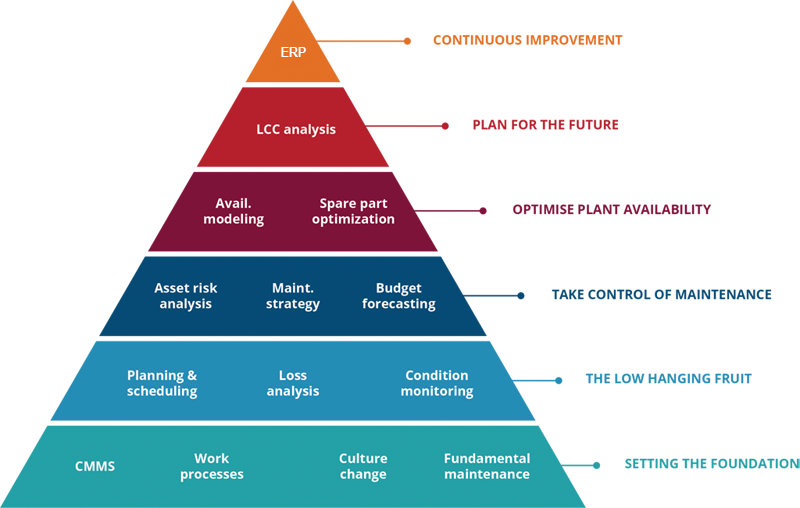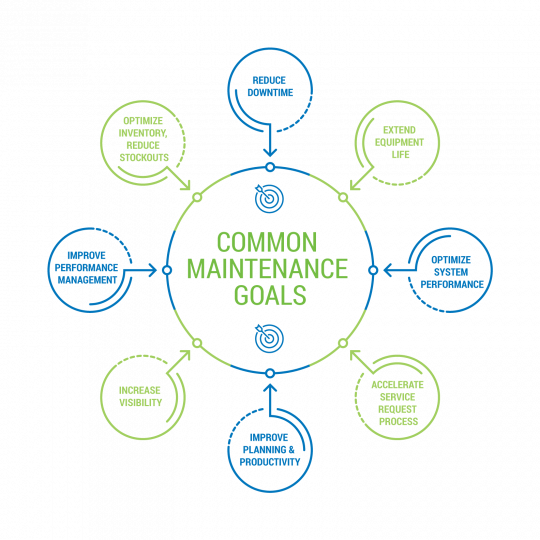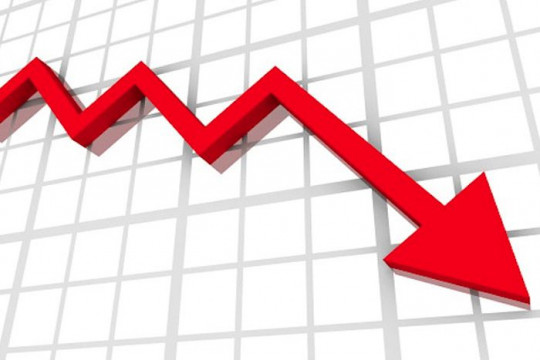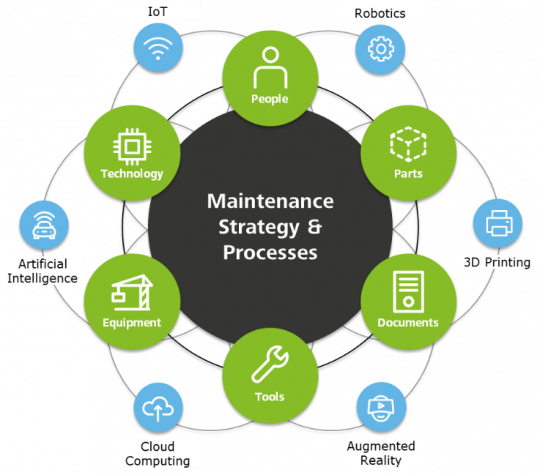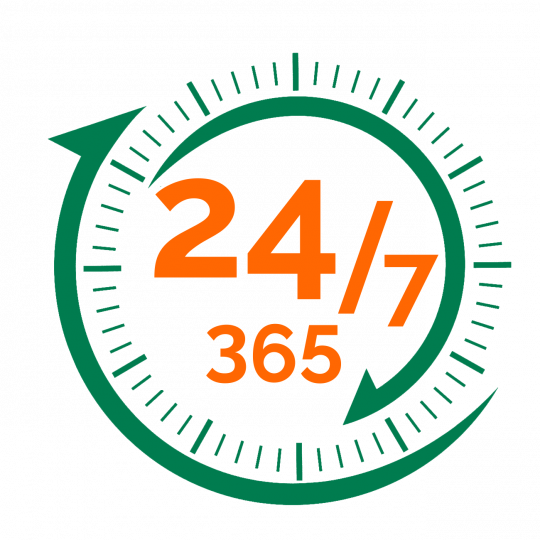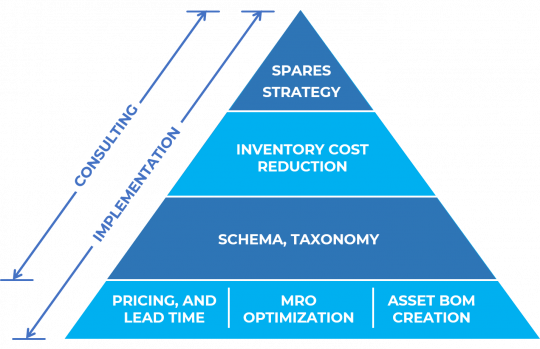Definition
Asset management may be defined as "a comprehensive and structured approach to the life cycle management of physical assets as tools for the efficient and effective delivery of the business drivers of an enterprise". It is essential to define which "building blocks" can be used in order to establish a perfect system. Our model is presented in the figure below.
Solutions Framework
There are 2 questions asked per each building block. The questions are about what is beneficial for your company in the end:
- Maintenance Efficiency - How organisationally efficient is the maintenance department in carrying out the maintenance work at best costs?
"Are we truly optimizing our maintenance expenditure?"
- Maintenance Effectiveness - How effective is the maintenance strategy in providing plant reliability and achieving output factors?
"Are we performing the right maintenance on the right equipment at the right time to achieve the business objectives?"
Our services provide the evaluation of your current practice to determine the best possible changes in relation with the advanced achievements in this area. We then subsequently provide trainings to your specialists and facilitate your organisation through the implementation of processes and systems in our solutions framework to ensure that your people continually deliver benefit to your organisation.


